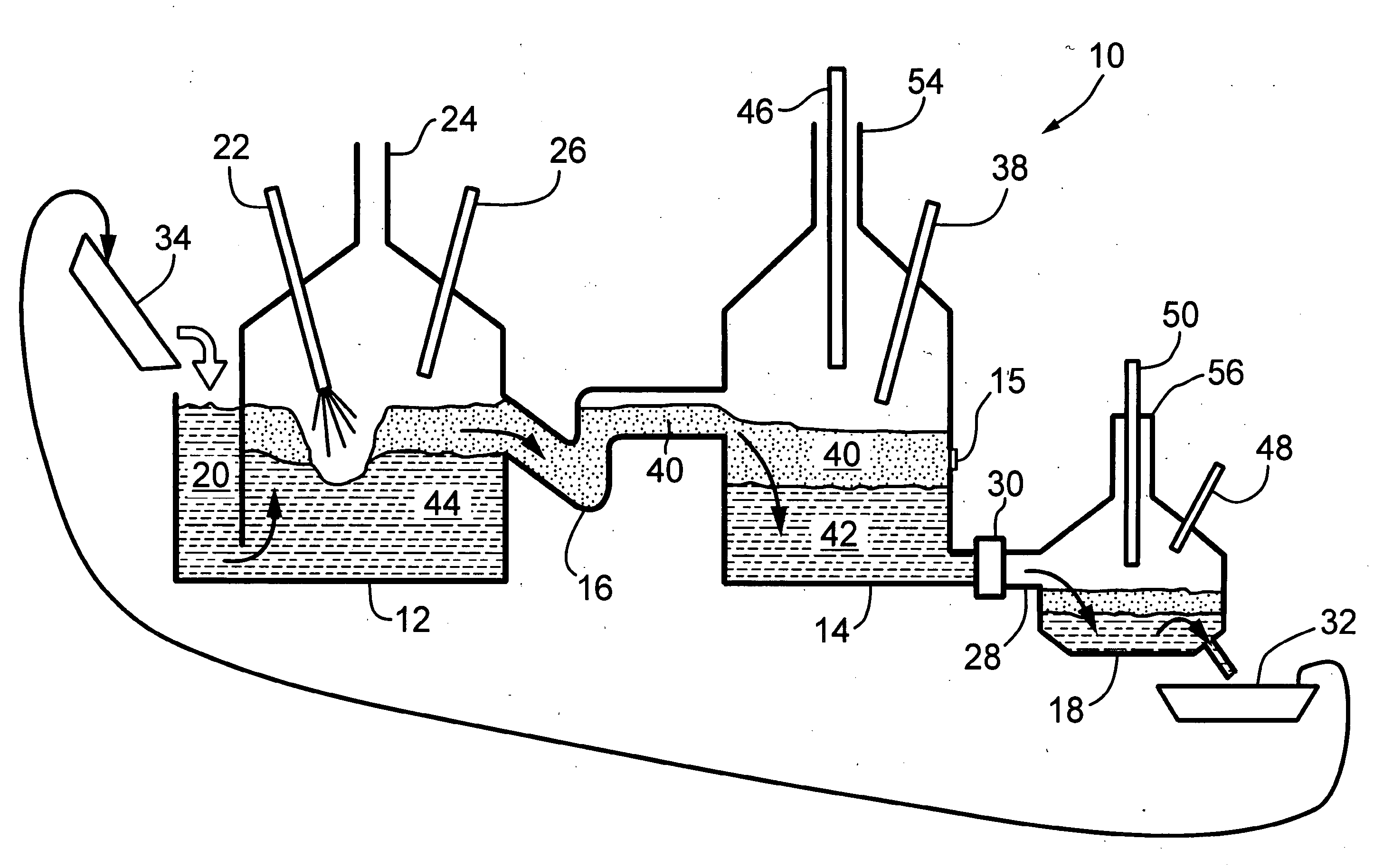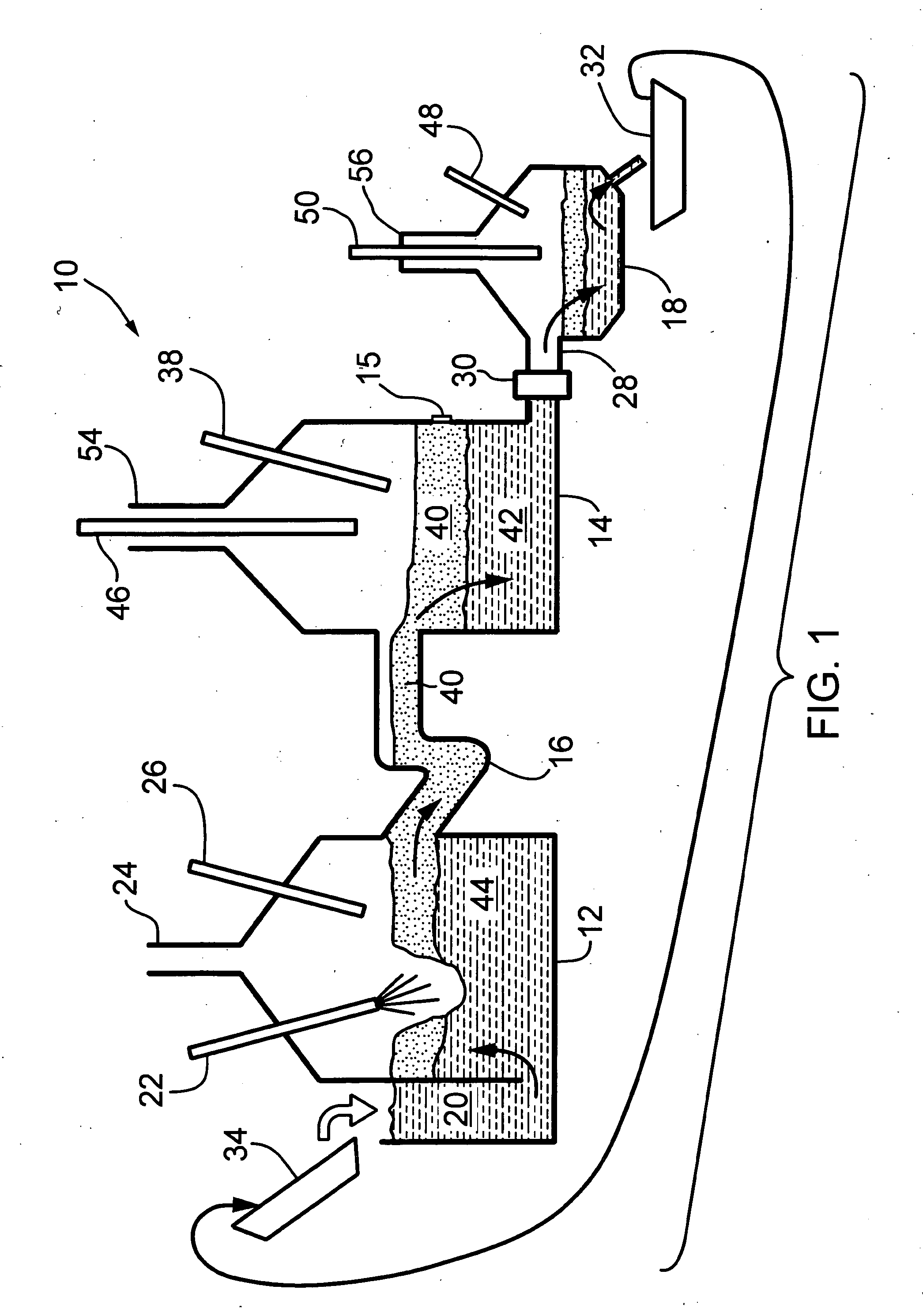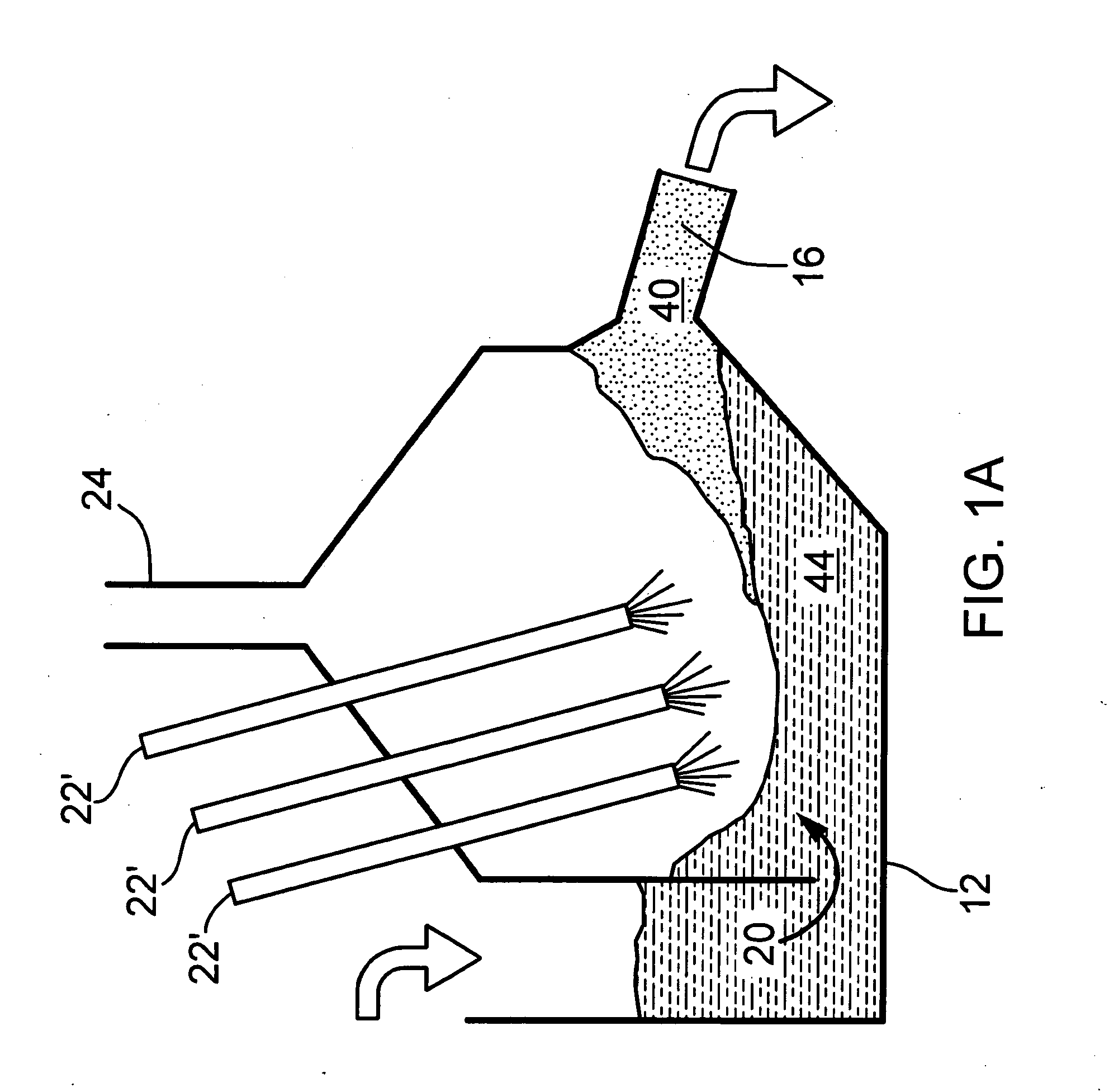Reactor and process for the continuous production of hydrogen based on steam oxidation of molten iron
a technology of steam oxidation and reactor, which is applied in the direction of metal hydrides, gas generation devices, inorganic chemistry, etc., can solve the problems of increasing gas prices, tightening gas supply, and significant add-ons to plant costs, and achieves low hydrogen conten
- Summary
- Abstract
- Description
- Claims
- Application Information
AI Technical Summary
Benefits of technology
Problems solved by technology
Method used
Image
Examples
first embodiment
[0060]The method disclosed above using three (3) vessels can be carried out using an apparatus such as that shown in FIG. 1. Referring first to FIG. 1, a first embodiment the apparatus for producing hydrogen is shown generally at 10 and includes a first vessel 12 and a second vessel 14 with the interiors of the vessels 12 and 14 connected by a passageway 16 with the vessels and passageway made of a material capable of withstanding the temperatures of molten iron, molten iron oxide and other materials contained therein.
[0061]A third vessel 18 is connected to vessel 14 by a conduit 28 and a valve 30 may or may not be present. Iron regenerated in the third vessel is emptied into a ladle(s) 32 and recycled back to vessel 12. Valve 30 is not needed in the case where the system is configured such that ladle(s) 32 continuously removing metal or alloy, but it is present when slag layer 40 is periodically tapped (unless it is drained through location of valve 30 during periodic tap). Vessel ...
embodiment 80
[0093]In another embodiment of the hydrogen production system, any iron lost in the process may be added on a continuous basis by injecting it into the vessel 12 or, on a batch basis using a separate melter such as the arc furnace, 82 shown in the embodiment 80 in FIG. 2, where the molten iron enters the hydrogen generation process through the steam oxidation reactor vessel 12 as seen in FIG. 2. In embodiments using a batch iron feed to replenish the molten metal, the accumulation of ash in the reduction reactor vessel 14 can be removed by dumping large volumes of slag that will allow longer uninterrupted operation when iron oxide reduction is taking place. To manage the large volumes of slag the reactor vessel 14 may be designed to tilt on a pivot to empty its contents or one or more tap holes 15 could be used.
[0094]It will be understood that the process described herein may be implemented with more than the reactor vessels 12, 14 and 18 described above. For example an embodiment o...
embodiment 160
[0107]The process performed using the system 100 in FIG. 3 can be simplified by dropping the two separate decarbonizaton reactor compartments as shown in the embodiment 160 shown in FIG. 3A and combining either the oxidation and decarbonization steps in the steam oxidation reactor compartment 106 or inject an oxidant through 120 into the reduction reactor compartment 108 after the carbon injection through 120 is stopped and before the alloy is drained from the reactor compartment 108. Combining decarbonization through steam oxidation of carbon in the iron and steam oxidation of the iron has the disadvantage of lowering the steam efficiency in the steam oxidation reaction and relies on the volume of iron in the steam oxidation being large enough to dilute the concentration of carbon in iron low enough so that the steam iron oxidation process can achieve the required reaction rate and hence hydrogen production rate.
[0108]In apparatus 260 shown in FIG. 3B the decarbonization process is...
PUM
 Login to View More
Login to View More Abstract
Description
Claims
Application Information
 Login to View More
Login to View More - R&D
- Intellectual Property
- Life Sciences
- Materials
- Tech Scout
- Unparalleled Data Quality
- Higher Quality Content
- 60% Fewer Hallucinations
Browse by: Latest US Patents, China's latest patents, Technical Efficacy Thesaurus, Application Domain, Technology Topic, Popular Technical Reports.
© 2025 PatSnap. All rights reserved.Legal|Privacy policy|Modern Slavery Act Transparency Statement|Sitemap|About US| Contact US: help@patsnap.com



